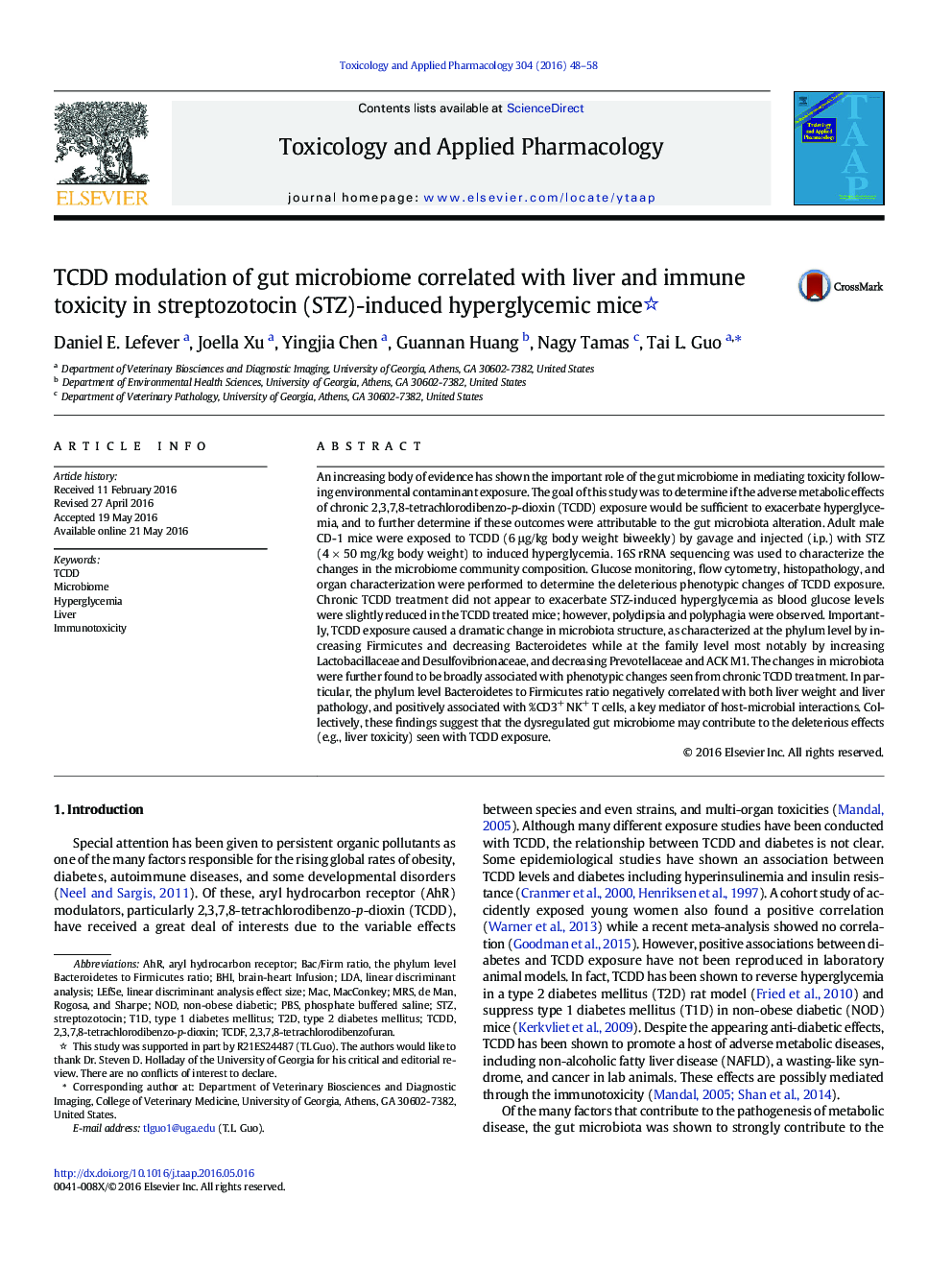| کد مقاله | کد نشریه | سال انتشار | مقاله انگلیسی | نسخه تمام متن |
|---|---|---|---|---|
| 2568024 | 1561158 | 2016 | 11 صفحه PDF | دانلود رایگان |

• TCDD promoted wasting syndrome.
• TCDD decreased hyperglycemia.
• TCDD exposure caused dysbiosis.
• Dysbiosis correlated with the adverse phenotypic changes.
An increasing body of evidence has shown the important role of the gut microbiome in mediating toxicity following environmental contaminant exposure. The goal of this study was to determine if the adverse metabolic effects of chronic 2,3,7,8-tetrachlorodibenzo-p-dioxin (TCDD) exposure would be sufficient to exacerbate hyperglycemia, and to further determine if these outcomes were attributable to the gut microbiota alteration. Adult male CD-1 mice were exposed to TCDD (6 μg/kg body weight biweekly) by gavage and injected (i.p.) with STZ (4 × 50 mg/kg body weight) to induced hyperglycemia. 16S rRNA sequencing was used to characterize the changes in the microbiome community composition. Glucose monitoring, flow cytometry, histopathology, and organ characterization were performed to determine the deleterious phenotypic changes of TCDD exposure. Chronic TCDD treatment did not appear to exacerbate STZ-induced hyperglycemia as blood glucose levels were slightly reduced in the TCDD treated mice; however, polydipsia and polyphagia were observed. Importantly, TCDD exposure caused a dramatic change in microbiota structure, as characterized at the phylum level by increasing Firmicutes and decreasing Bacteroidetes while at the family level most notably by increasing Lactobacillaceae and Desulfovibrionaceae, and decreasing Prevotellaceae and ACK M1. The changes in microbiota were further found to be broadly associated with phenotypic changes seen from chronic TCDD treatment. In particular, the phylum level Bacteroidetes to Firmicutes ratio negatively correlated with both liver weight and liver pathology, and positively associated with %CD3+ NK+ T cells, a key mediator of host-microbial interactions. Collectively, these findings suggest that the dysregulated gut microbiome may contribute to the deleterious effects (e.g., liver toxicity) seen with TCDD exposure.
Journal: Toxicology and Applied Pharmacology - Volume 304, 1 August 2016, Pages 48–58